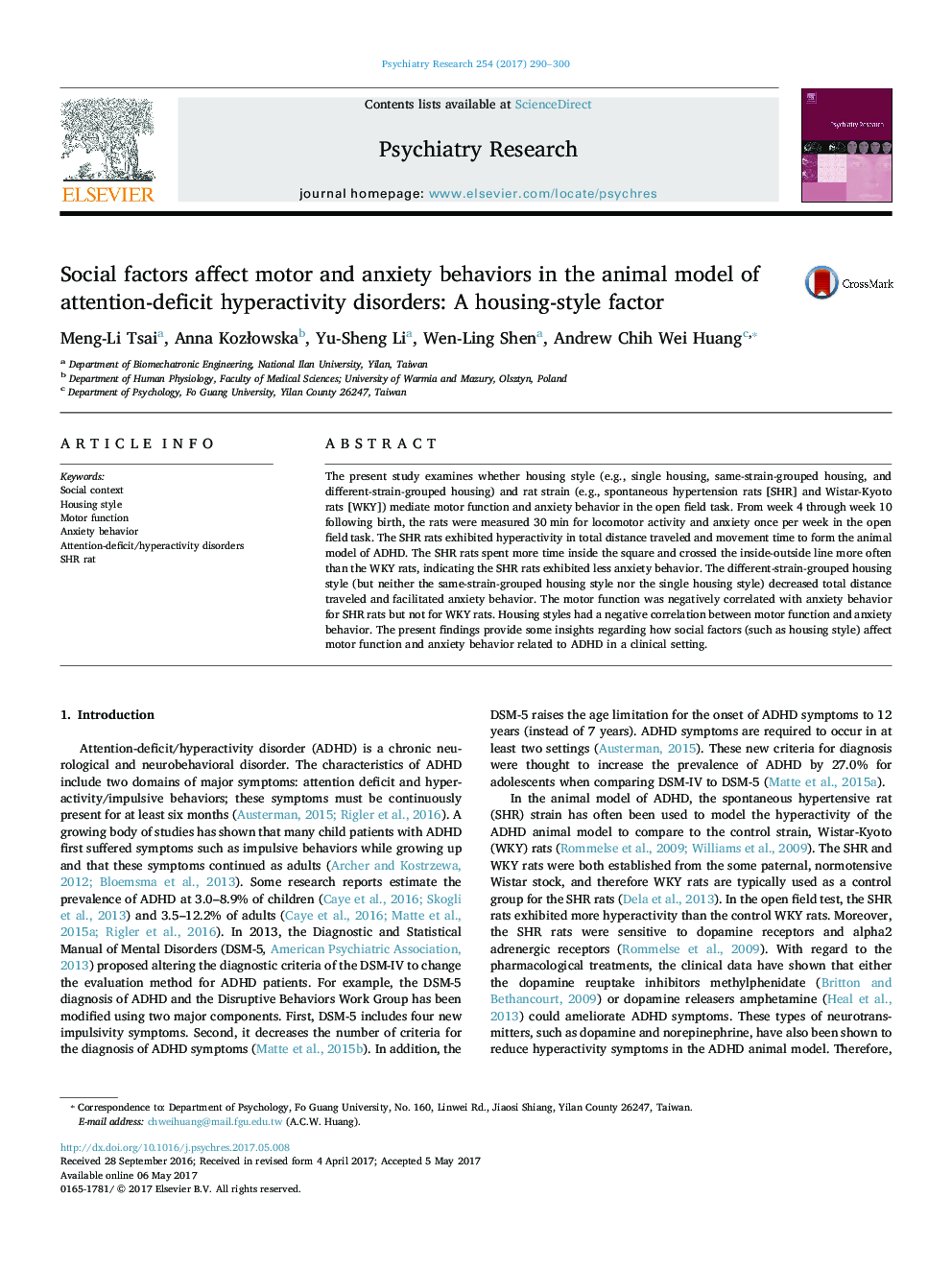| Article ID | Journal | Published Year | Pages | File Type |
|---|---|---|---|---|
| 4933152 | Psychiatry Research | 2017 | 11 Pages |
Abstract
The present study examines whether housing style (e.g., single housing, same-strain-grouped housing, and different-strain-grouped housing) and rat strain (e.g., spontaneous hypertension rats [SHR] and Wistar-Kyoto rats [WKY]) mediate motor function and anxiety behavior in the open field task. From week 4 through week 10 following birth, the rats were measured 30Â min for locomotor activity and anxiety once per week in the open field task. The SHR rats exhibited hyperactivity in total distance traveled and movement time to form the animal model of ADHD. The SHR rats spent more time inside the square and crossed the inside-outside line more often than the WKY rats, indicating the SHR rats exhibited less anxiety behavior. The different-strain-grouped housing style (but neither the same-strain-grouped housing style nor the single housing style) decreased total distance traveled and facilitated anxiety behavior. The motor function was negatively correlated with anxiety behavior for SHR rats but not for WKY rats. Housing styles had a negative correlation between motor function and anxiety behavior. The present findings provide some insights regarding how social factors (such as housing style) affect motor function and anxiety behavior related to ADHD in a clinical setting.
Related Topics
Life Sciences
Neuroscience
Biological Psychiatry
Authors
Meng-Li Tsai, Anna KozÅowska, Yu-Sheng Li, Wen-Ling Shen, Andrew Chih Wei Huang,
